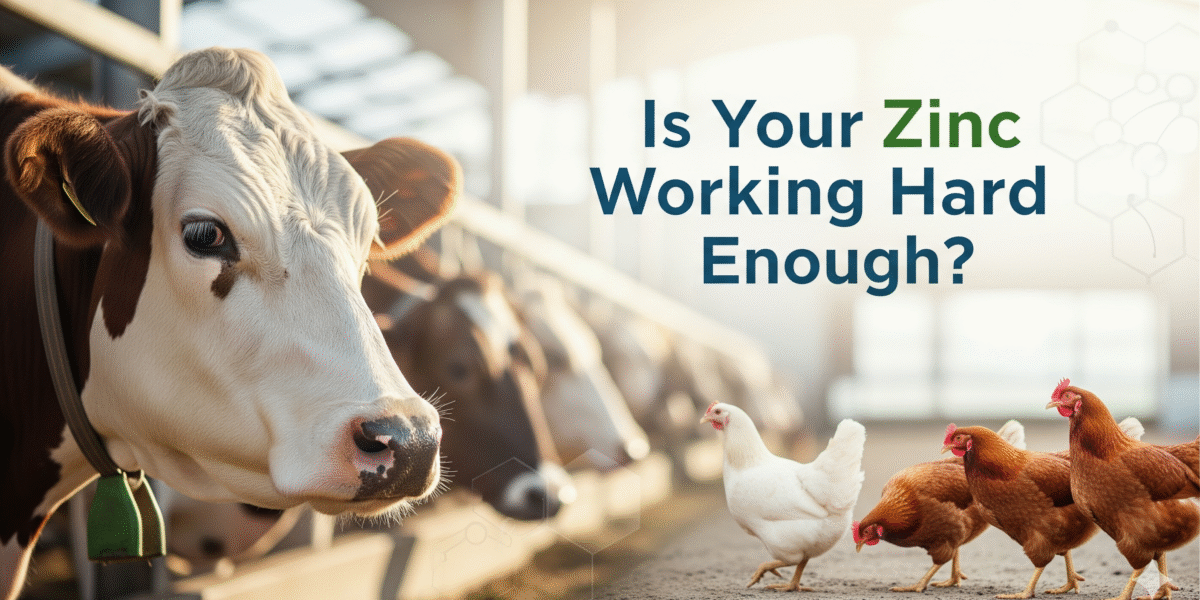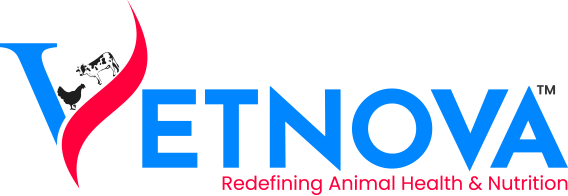Zinc Bisglycinate Uses in Animal Feed: A Complete Guide
Minerals play a vital role in animal nutrition, and among them, zinc stands out as one of the most important. It is involved in enzyme functions, immunity, growth, reproduction, and overall health. However, not all forms of zinc are equally absorbed by animals. This is where zinc bisglycinate makes a big difference.
In this blog, we’ll explore what zinc bisglycinate is, its benefits, its role in animal feed, and how it compares with other zinc sources. You’ll also find practical insights into how farmers, nutritionists, and feed formulators use this mineral to boost productivity and animal health.

What is Zinc Bisglycinate?
Zinc bisglycinate is a chelated form of zinc, which means the zinc atom is bound to two molecules of the amino acid glycine. This chelation process improves zinc’s stability and absorption inside the animal’s digestive system.
Unlike inorganic zinc sources (like zinc oxide or zinc sulfate), which may interact with other nutrients and lose effectiveness, chelated zinc bisglycinate is protected during digestion and absorbed more efficiently.
Because of this higher bioavailability, less zinc is wasted, and animals can utilize it better for growth, immunity, reproduction, and skin or coat health.
Why is Zinc Important in Animal Nutrition?
Before understanding the specific benefits of zinc bisglycinate, it’s important to look at zinc’s role in animal health. Zinc is essential for:
- Enzyme activation: Over 300 enzymes require zinc for proper function.
- Immune response: Supports white blood cell activity and resistance to diseases.
- Reproduction: Influences fertility, heat cycles, and embryo development.
- Growth and productivity: Helps in protein synthesis, cell repair, and overall weight gain.
- Skin, hair, and hooves: Strengthens tissues, reduces lesions, and improves coat condition.
Animals that do not receive enough zinc often show signs like poor growth, weak immunity, fertility issues, hoof or skin problems, and lower productivity.
This is why chelated zinc supplements like zinc bisglycinate are becoming popular in animal feed.
Key Zinc Bisglycinate Benefits
Now let’s look at the zinc bisglycinate benefits in animal nutrition:
- Higher Absorption – Animals absorb it more effectively compared to inorganic zinc sources.
- Stronger Immunity – Boosts defense against infections and stress.
- Better Growth and Productivity – Improves weight gain, feed conversion, and milk or egg yield.
- Reproductive Health – Supports fertility, conception rates, and healthy offspring.
- Hoof, Skin, and Coat Health – Prevents hoof cracks, dermatitis, and dull coats.
- Eco-Friendly – Reduces zinc excretion into the environment.
These chelated zinc benefits make zinc bisglycinate a preferred choice in modern feed formulations.
Zinc Bisglycinate Uses in Animal Feed
Zinc bisglycinate is widely used across different animal species. Let’s break it down:
Poultry (Broilers, Layers, and Breeders)
Enhances growth and feed efficiency, resulting in better weight gain.
Improves eggshell strength, laying rate, and hatchability in breeders.
Supports leg health and skin repair, reducing footpad dermatitis.
Dairy Cattle
- Boosts milk yield and quality by supporting enzyme systems linked to lactation.
- Improves reproductive performance (fertility, heat cycles, conception).
- Strengthens hooves and skin, preventing lameness and mastitis-related issues.
- Benefit: Higher milk production and better fertility, with fewer hoof problems.
Swine (Piglets, Growers, and Sows)
- Piglets: Improves gut health and immunity, reducing diarrhea during weaning.
- Grower-Finishers: Enhances nutrient absorption, growth rate, and feed efficiency.
- Breeding Sows: Improves fertility, litter size, and milk production.
- Outcome: Healthier piglets, faster growth, and more productive sows.
Horses and Companion Animals
- Horses: Strengthens hooves, boosts skin and coat health, and supports stamina in performance horses.
- Dogs & Cats: Improves coat shine, skin condition, immunity, and reproductive health.
- Advantage: Visible improvements in appearance, vitality, and performance.
Aquatic animal
- Growth and Development: Zinc is crucial for normal growth, protein synthesis, and overall development in fish.
- Immune System: It plays a key role in maintaining immune function and enhancing the defense against pathogens and stress.
- Metabolic Processes: Zinc is involved in energy metabolism and acts as a cofactor for more than 200 enzymes, supporting various biochemical processes.
- Reproduction: Zinc is also essential for normal reproductive functions in fish.
- Antioxidant Defense: Zinc contributes to the fish’s antioxidant defense system, helping to protect against free radicals and oxidative stress.
- Effect: Better growth, disease resistance, higher survival rate and improved feed efficiency.
Environmental Benefits
Unlike inorganic zinc, which is poorly absorbed and excreted in large amounts, zinc bisglycinate is highly bioavailable. This reduces zinc waste in manure, lowering the environmental footprint of animal farming.
Zinc Bisglycinate vs Other Zinc Sources
There are several zinc forms used in animal nutrition. Here’s how zinc bisglycinate compares:
- Zinc Sulfate / Oxide (Inorganic): Cheap, but low absorption; most of it passes out unused.
- Zinc Glycinate: Single glycine-bound zinc; better absorption than sulfate but less stable than bisglycinate.
- Zinc Bisglycinate: Double glycine bond; highest bioavailability and stability, making it more efficient.
- Metho-Chelated Zinc: A specialized chelated form with methionine; also highly bioavailable, often compared with bisglycinate.
In short: Zinc bisglycinate offers a balance of high absorption, stability, and cost-effectiveness, making it a preferred choice in feed.
Conclusion
Zinc is an essential mineral for animal health, but the form in which it is supplied makes all the difference. Zinc bisglycinate uses in animal feed extend from improving growth, immunity, and reproduction to enhancing hoof, skin, and coat health. Its superior absorption not only benefits animal performance but also reduces environmental impact.
Compared to inorganic zinc, chelated zinc bisglycinate delivers greater efficiency, better results, and long-term sustainability. For farmers, nutritionists, and feed formulators, it represents a smart choice that supports productivity while minimizing waste.
In a world where animal health, farm efficiency, and sustainability matter more than ever, zinc bisglycinate stands out as a reliable and effective solution.
Yes. Zinc bisglycinate is considered safe for poultry, cattle, swine, horses, and even companion animals when used at recommended levels.
It improves enzyme function, immunity, and nutrient utilization, which translate into better growth, reproduction, and productivity.
Both are chelated forms with high absorption. Bisglycinate uses glycine, while metho-chelate uses methionine. Both work well, but bisglycinate is often preferred for its cost-effectiveness and stability.
Yes. Since animals absorb more zinc from bisglycinate, feed formulations require lower doses compared to inorganic zinc, helping reduce waste and optimize costs.
